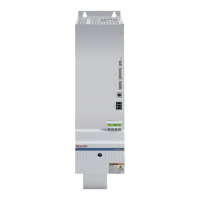Rexroth IndraDrive Calculations 15-1
DOK-INDRV*-SYSTEM*****-PR02-EN-P
15 Calculations
15.1 Determining the Appropriate Drive Controller
Introduction
Supply for the drive system Rexroth IndraDrive takes place by means of
compact converters HCS or mains supply modules HMV. According to
drive task, design of drive controller and operating conditions, you can in
addition use chokes, additional capacitors, braking resistors, transformers
etc.
The drive controller or supply module has to make available the DC bus
continuous power and for acceleration the DC bus peak power. With
regenerative operation, they must be able to absorb the continuous
recovery power and peak recovery power.
Before the drive controller or mains supply module and the additional
components can be selected, the motors and drive controllers to be used
must be defined.
To ensure correct dimensioning of the drive system, we recommend to do
the calculations as described in the following sections.
DC Bus Continuous Power
DC bus continuous power is calculated from the mechanical power,
taking into consideration the motor and controller efficiency, as well as
simultaneity factors.
9550
*
][
60
2**
][
nM
kWP
or
nM
MWP
m
m
≈
=∗=
π
ω
P
m
: mechanical power
M: torque [Nm]
ω: angular velocity [min
-1
]
n: motor speed [min
-1
]
Fig. 15-1: Mechanical power
To calculate the mechanical continuous power of a servo drive, you need
the effective motor torque and the average motor speed.
The effective motor torque can be taken over from the servo drive
calculation. The average motor speed is determined as follows.
For servo drive tasks at common NC machine tools, the average motor
speed is approx. 25% of the rapid traverse speed. In some cases,
however, this rough estimation is not sufficient. An exact calculation of the
average motor speed is required.
Mechanical Power
Mechanical Continuous Power
for Servo Drives
Average Motor Speed

